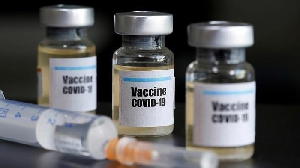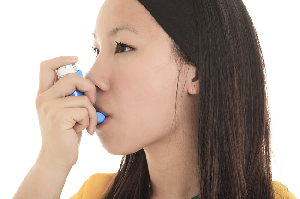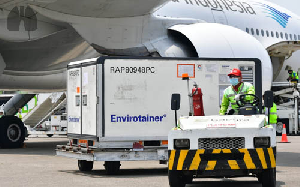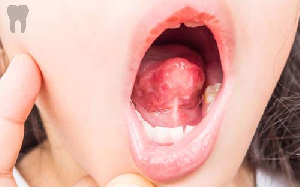
Martin Kolb, Anh Tuan Dinh-Xuan, Laurent Brochard
European Respiratory Journal 2021 57: 2100753; DOI: 10.1183/13993003.00753-2021
Background
The coronavirus disease 2019 (COVID-19) pandemic continues to dominate our daily lives. The second wave has slowed down in most regions around the globe, just to give way to the third wave of infections. Hospitalisations and death are again on the rise despite public health measures and vaccination programmes. Unfortunately, we have to expect that COVID-19 will persist as a major challenge for the delivery of medical care for a long while to go. Despite all efforts, a significant number of patients, in particular the elderly and those with risk factors, will get ill from this disease and some will eventually require hospitalisation.
During the early stages of the pandemic, empirical use of antiviral and anti-inflammatory drugs such as hydroxychloroquine, monoclonal antibodies was widespread. Randomised clinical trials have been conducted at an unprecedented rate to generate evidence for specific interventions.
From the second half of 2020, many reports of these trials were readily available in the medical literature, often as unreviewed articles on preprint servers, prior to fast-tracked processing in peer-reviewed journals. Results were often mixed and inconclusive, due to issues related to study design, study size and follow-up period. If it is understandable that clinical decision-making at the beginning of the pandemic was driven by suboptimal study reports to cope with an emergency situation, it is now time to create better developed guidance documents to control a disease that will not be easily eradicated. As COVID-19 is here to stay, from now on clinicians will need the best possible recommendations for managing COVID-19 patients, based on robust data and studies, assessed as a whole through applying appropriate methodology.
COVID-19 guideline: strong and conditional recommendations
In this issue of the European Respiratory Journal, Chalmers et al. publish the first comprehensive evidence-based recommendations related to the management of hospitalised adults with COVID-19 using GRADE methodology. This guideline was developed and endorsed by the European Respiratory Society (ERS) in collaboration with the Chinese Thoracic Society. It is based on the most rigorous methodology possible and addresses the most relevant and practical questions about the medical treatment of hospitalised adults with COVID-19. The guideline group separated their statements depending on whether or not hospitalised patients with COVID-19 require supplementary oxygen or ventilatory support.
The most noteworthy recommendations include a strong recommendation for the use of corticosteroids in COVID-19 patients requiring supplementary oxygen or ventilatory support, while a strong recommendation is given against their use in patients not requiring supplementary oxygen. Similarly, the panel suggested offering IL-6 receptor antagonist monoclonal antibody therapy to hospitalised patients with COVID-19 requiring oxygen or ventilatory support (conditional recommendation). Furthermore, the group strongly recommended the use of anticoagulation for all hospitalised patients with COVID-19.
The first European Respiratory Society
One of the issues associated with the unprecedented speed with which new evidence for the management of COVID-19 accumulates is that writing guidelines and updating them are both lengthy processes. This means that guidelines run the risk of being by the time they are published in such a fast-evolving crisis such as the COVID-19 pandemic. Consequently, the present document represents the first ERS guideline on this topic and is intended to be continuously updated as a living guideline. The panel members are committed to keeping up with continuous literature searches and updated grading and recommendations as new evidence emerges, and the ERS intends to publish these as rapid guideline updates on specific topics in one of its journals, namely the ERJ, European Respiratory Review or ERJ Open Research.
While timely and invaluable, the guideline did not cover the management of COVID-19 in the community, which remains an area of urgent need. In addition, management of COVID-19 in children is not addressed. Further future needs are in the development of guidelines for longer term management, follow-up of patients who have recovered from COVID-19, and COVID-19 vaccines. The ERS has already formed working groups to address some of these important questions.
In addition, the topic of ventilatory support is limited to COVID-19 patients with acute hypoxaemic respiratory failure without an immediate indication for invasive mechanical ventilation. The panel conditionally suggested high-flow nasal cannula or noninvasive continuous positive airway pressure therapy delivered through either a helmet or a facemask for these patients.
CARDS management: controversies in invasive ventilatory support
We have to acknowledge some uncertainty about the use of invasive ventilatory support for COVID-19. Strong, but healthy, debates have taken place within the critical care community about several aspects of the management of patients with COVID-19-induced acute respiratory distress syndrome (ARDS), often referred to as CARDS. Several recommendations have been published regarding the decision for intubation, the management of positive end-expiratory pressure (PEEP) and even the use of protective lung ventilation. Of note, none of these were based on the same strict methodological approach that underpins the recommendations of Chalmers et al. and they have often been contradictory and, until now, rarely based on strong evidence in this population. In fact, only a few clinical trials have been launched regarding ventilatory management and no results have been presented yet. The reasons for these differences in the recommendations are very much related to the timing of the pandemic, with an initial feeling of urgency required to provide some guidance, followed by the progressive recognition of several specificities of CARDS patients and possibly different pathophysiological mechanisms from those present in other forms of ARDS.
In order to understand the dilemma, it is important to consider some differences in lung injury related to severe COVID-19 and how it is different to typical ARDS. The initial descriptions of CARDS have mentioned the presence of at least two phenotypes, based mostly on lung elastance and the atypical presentation of patients having relatively preserved lung mechanics (good, or low, elastance) but still very significant shunting and hypoxaemia. This is somewhat unusual in ARDS, where usually the sickest patients, i.e. those with the lowest oxygenation level, are also those who have the worst lung mechanics and the smaller aerated lung. Therefore, the pathophysiology of ARDS is usually rather consistent across the different types of abnormalities (gas exchange, mechanics, dead space, reduced lung volumes) as well as for the risk of ventilator-induced lung injury. This apparent dissociation for some CARDS patients suggests a different mechanism for shunt. The autopsy findings described in CARDS patients could potentially offer an anatomical–pathological explanation for these findings, with chaotic aspects of capillary vascularisation (intussusceptive angiogenesis) in addition to the presence of microthrombi. Although the use of a classical lung protective strategy in CARDS is universally recommended, the tolerance of slightly higher tidal volumes (as a way to facilitate the tolerance) has also been proposed in CARDS and is supported by recent analyses in patients with classical ARDS when they have low elastance values.
Another striking aspect of the presentation of some patients with CARDS is the relatively good tolerance of hypoxaemia, called silent hypoxaemia, also frequently referred to as. Although the variability to air hunger and dyspnoea in response to hypoxaemia is well-known and mitigated by different factors often present in COVID-19 patients (age, diabetes, etc.) many patients seem to fall in this category with COVID-19. ACE-2 receptors which bind with the virus spike proteins are present in the chemosensitive carotid bodies and whether their involvement explains a blunted response is unknown. This characteristic raised an important question about the indication for intubation. Mechanical ventilation is primarily indicated to support and reduce the work of breathing, and a dissociation between oxygenation and work of breathing in some of these patients prompted some physicians to recommend waiting until clinical signs of high work of breathing are present before deciding for intubation, even in conditions of severe hypoxaemia. This is unusual in ARDS again, because severe hypoxaemia is usually associated with poor lung mechanics, high work of breathing and dyspnoea. Therefore, techniques to improve oxygenation have become an important part of the management of CARDS, including awake self-proning and, as just recommended in the ERS COVID-19 guideline, use of high-flow nasal cannula, which has also the potential to reduce the work of breathing. Several reports have shown that, compared to the management provided in conditions of surge at the beginning of the pandemic, it was possible to reduce the use of invasive mechanical ventilation, a finding clearly observed over time across the duration of the pandemic. Matched cohort studies suggested that a less frequent use of invasive mechanical ventilation was not associated with deleterious effects on survival and in a very large cohort study in the UK, after careful multiple adjustments, less invasive ventilation was associated with a lower mortality.
Another debate has concerned the use of PEEP and the recruitability of the lungs of these patients. Recommendations have varied between high PEEP (initially) and low PEEP–inspiratory oxygen fraction (F IO2) tables. As for classical ARDS, however, an individual titration seems desirable since various degrees of lung recruitability have been described both in classical ARDS and in CARDS. One ongoing trial is testing an individualised approach compared to the use of PEEP–FIO2 tables (NCT03963622). Other aspects discussed have concerned the monitoring of the dead space or one of its surrogates (e.g the ventilatory ratio), elevation of which could raise the suspicion of micro or macrovascular thrombi; but the evidence there is very weak and cannot replace other markers. The need to monitor and control the respiratory drive under assisted ventilation after the initial phase has also been emphasised, to potentially avoid mechanisms of self-inflicted lung injury. A small study suggested that patients who present a relapse of the initial respiratory failure can be predicted by the presence of a high respiratory drive. Management of sedation has been regularly reported to be complex in this context.
All these factors illustrate the difficulty of managing these patients under mechanical ventilation, who, in the most severe forms, may require extracorporeal membrane oxygenation (ECMO). Indications for ECMO are relatively limited and some series have reported relatively high rates of complications.
The evolving management of COVID-19
Much has been learned about the pathogenesis, epidemiology and clinical management of COVID-19 in the past year. We are not aware of any other medical condition that would have ever had such a high speed; dynamic in the emergence of medical knowledge, as reflected in the unprecedented exponential rise in scientific publications during the past 14 months. Despite all the imperfections in the system and the hardship and suffering the pandemic has caused, COVID-19 has also shown how creative and productive humans can be if they work together. Of course, nothing is fast enough when it is about survival of an individual or a society. But the new and first methodologically sound COVID-19 treatment guideline for hospitalised patients is an important step into the future. The ERS COVID-19 guideline teaches healthcare providers about many of the do's and the don't, and it aims to add continuous evidence-based advice as new literature emerges. The guideline panel deserves our gratitude for such an enormous and laudable effort.
Footnotes
-
Conflict of interest: M. Kolb reports grants from Canadian Pulmonary Fibrosis Foundation and Canadian Institute for Health Research, grants personal fees for advisory board work and other (site PI in industry-sponsored clinical trials) from Boehringer Ingelheim and Roche, grants and personal fees for advisory board work from Prometic and Pieris, other (chief editor allowance) from European Respiratory Journal, personal fees for advisory board work from Third Pole, MitoImmune, Abbvie, DevPro Biopharma, Horizon, Algernon and CSL Behring, outside the submitted work.
-
Conflict of interest: A.T. Dinh-Xuan reports personal fees for lectures from Chiesi, Circassia and GSK, outside the submitted work.
-
Conflict of interest: L. Brochard reports grants from Medtronic Covidien and Draeger, non-financial support from Fisher Paykel, Philips and Sentec, other (patent) from General Electric, outside the submitted work.
- Received March 13, 2021.
- Accepted March 15, 2021.
- Copyright ©The authors 2021














